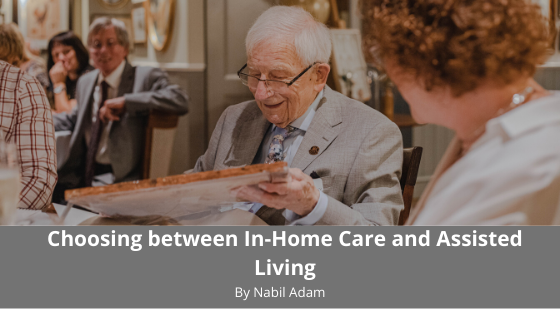Medical and technological advancements in society have allowed people to live longer and longer over the years. On average, people in the U.S. live for about 80 years. This means eldercare is an ever-growing need. While there are a variety of options, many senior citizens wish to live out their days in their own homes. Seniors who reach the point where skilled nursing care is essential to their health and wellbeing must decide, along with their families, whether assisted living or in-home care is the right path for them. There are a few factors to consider when making this decision, such as the level of care needed and financial viability.
In-home Care
There are many forms of in-home care, but the bottom line is the individual remains in their own home, and someone comes in to assist regularly. There are agencies that can be hired to schedule a caretaker to visit the senior at home a few times a week or for several hours each day, depending on the level of care required. These caregivers can help with daily living needs such as bathing, preparing meals, running errands, and housekeeping, as well as providing companionship. In-home care can offer more personalized, one-on-one care. Typically, in-home care providers are hired on an hourly basis, and their fees range anywhere from $15-25 an hour. Still, costs can be higher if constant supervision or overnight supervision is required.
Assisted Living
For individuals who require help with daily tasks such as housekeeping, organizing medications, and keeping track of appointments, assisted living facilities can be an option that allows them to maintain some independence. Some assisted living facilities may offer a higher level of care than others. These facilities may provide semi-private dormitory-style living quarters or even small private apartments on a large campus. Residents of these facilities can remain involved in their community and attend events outside the facility. They can have visitors any time they like and can maintain control over their finances. Many even permit residents to keep pets. Staff is available around the clock to keep seniors safe. The cost of these facilities can vary greatly depending on where the facility is located and services provided.
Making a Decision
It’s essential to consider the pros and cons of each option since there is no “right option” for everyone. Often those who love and care for seniors will start by trying to assist their loved one themselves, but over time, as the individual’s needs change, they will likely require greater one-on-one care and supervision. Deciding whether that care comes in the form of an in-home service or an assisted living facility should be based on the safety of the senior, level of care required, affordability, and the individual’s preferences to the extent this is possible.

